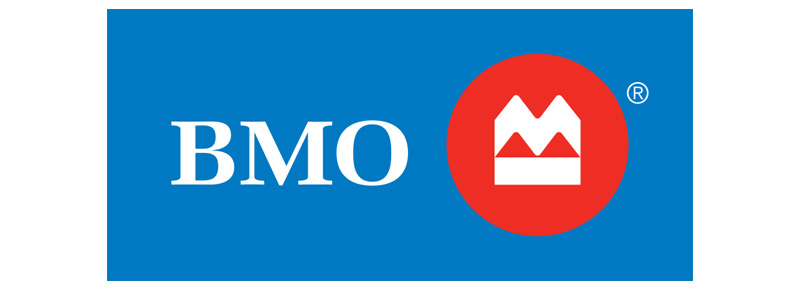Navigating the complexities of ROI in a dynamic media landscape
A media expert POV
In a recent CMA Media Council meeting, industry experts delved into the challenges and opportunities surrounding return on investment (ROI) measurement in the ever-evolving media landscape. The discussion highlighted the need for a common language, transparency, and a strategic approach to ensuring an effective ROI in media spending. This article explores key insights from the meeting, addressing concerns, proposing solutions, and envisioning the future of media measurement for 2024 and beyond.
ROI measurement
ROI is an increasingly important KPI for businesses in Canada. ROI is often measured to include short-term sales returns in marketing mix modeling (MMM) and sales lift analysis tools. ROI typically refers to gross profit returns, while return on ad spend (ROAS) is a gross revenue metric. Increasing costs of goods sold, including inflation in media, raises questions about the effectiveness of media in helping deliver sales targets across industries in Canada. The debate on whether to focus on upper-funnel awareness and consideration targets or bottom-funnel sales intensifies as businesses are pressed to show returns in a challenging economy. Regardless, the CMA Media Council agrees that advertisers need to share back to their agencies and media suppliers these important metrics so we can get better together.
Fragmentation of media consumption
Media fragmentation across devices continues to pose a challenge in ROI measurement. Viewership, engagement and the geographical impact of digital media is more complex than ever. This means analytics teams need to have a comprehensive understanding of what to measure for ROI. For instance, how is an ROI tool accounting for video across linear TV, Connected TV, and online video? Is the ROI tool truly reflecting the diversity in media audiences across Canada? The role of creative has always been known as the number one driver in ROI performance, but many advertisers underutilize creative messaging in their ROI analysis. The size of a brand is also a key factor. Simply put, mass brands are more likely to be successful than smaller ones. The question is, how do we truly focus on the Canadian ecosystem while we are still getting measurement right?
Aligning advertisers and media suppliers
There seems to be a disconnect between advertisers and media suppliers in terms of understanding key metrics. The Moneyball Study underscored the importance of aligning broadcasters and media suppliers to establish a common language for outcome measurement. There is strong support for a joint industry committee (JIC) to bridge the gap and enhance transparency as a starting point. We should be looking at advertisers' campaigns holistically, understanding each media vendor's input, their strengths and how they can contribute to the effectiveness of client campaigns.
Transparency and trust
A growing loss of trust has developed in the market due to a lack of transparency in sharing important metrics with media suppliers. Campaign success metrics need to be shared at the outset with expectations aligned between advertisers and partners to rebuild trust within the industry. Knowing upfront what success looks like in advertiser terms will help everyone evaluate the clear wins, and what we need to learn from at the end of the campaign. To date, marketers have done themselves a disservice by not sharing information about what success looks like. We have learned and witnessed that fragmented media erodes the shared ROI, which might be augmenting another strategy even when achieving short-term ROI.
The evolving role of CMOs
Chief Marketing Officers (CMOs) need to ask whether they are getting the results needed across the full funnel. Yes, ROI is determined by what you’re doing today, but the long-term strategy is not being talked about enough.
If businesses are focused on profit rather than building revenue and long-term brand health, long-term ROI is a challenge in the Canadian market. To create evidence similar to The Long and the Short of It from Binet and Fields, brands need to have robust historical data sets or comprehensive and reliable panel data, while understanding that both are associated with high costs. In a challenging economy, the pressure of cost per acquisition analysis and short-term financial growth will continue to push aside measurement of long-term success. The best thing a CMO can do is be a friend to the CFO – not a cost centre – especially when making the case for longtail brand awareness build.
The role of insights functions
Insights managers need to play a role to steer marketers to a longer-term approach and challenge. All in all, a nonpartisan form of insight is needed.
Consider the port wine analogy:
The age of a solera – old wine mixed with new wine – drives the value and provides history and depth. Now, replace the idea of “wine” with “data.” Insights will come out of a “data solera.”
Having two or three years of data history allows you to look back on seasonality and market conditions to pick up patterns in data. The importance of the rearview mirror modeling provides a glimpse into where the brand has been and what has been learned. The ideal mix is to include fresh data combined with historical, seasoned data, then insights can come out of this mixed data pool. The value of pattern recognition within data, such as sales and consumer engagement, is paramount to success.
Final thoughts
While the complexity of measuring ROI continues to increase, there is a growing importance to refocusing on long-term ROI, considering the value to the brand and the broader Canadian media ecosystem. In this, common themes are unfolding across industry leaders from various roles: Media transparency, consistency in data, alignment between stakeholders, and a balance of short-term and long-term goals will be critical for sustainable success.
We, as a media industry, have trained our clients to look too closely at the lower funnel, only to now realize that we cannot measure some things in that type of model where brand measures – upper funnel – are lost, leading to missing nuance and value. Marketers are relying on digital far too much, and we’re now seeing digitally savvy youth stepping back in time, reading newspapers and knitting. Marketers need to look at how all these things are connected, and realize that there won’t be cookie-cutter solutions. As we move forward, the need for innovation, collaboration and strategic thinking becomes increasingly apparent.
Authors:
Hilary Borndahl, Founder & CEO, Miix Analytics
Steve Muscat, VP, Strategic Partnerships, Active International



































